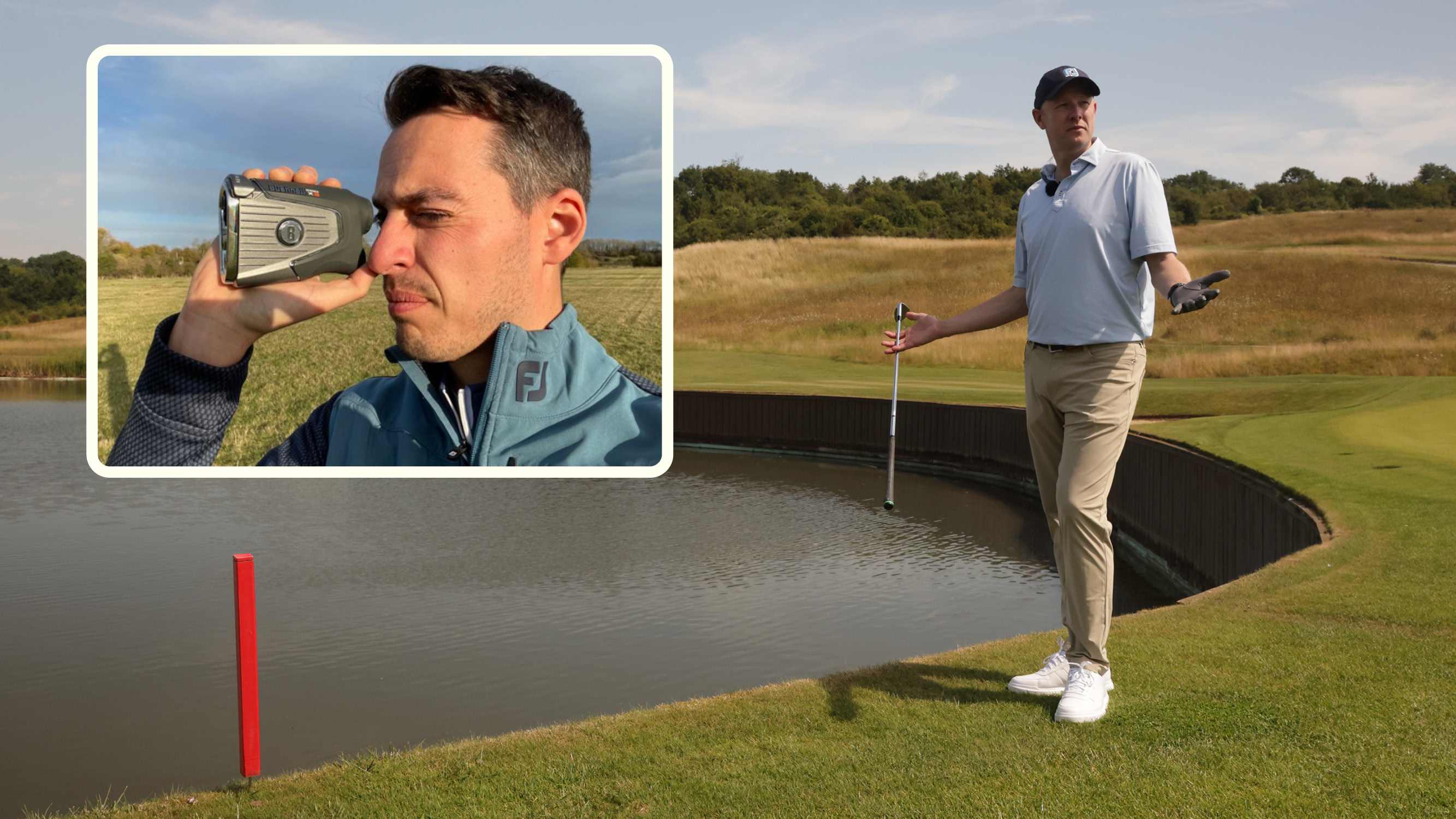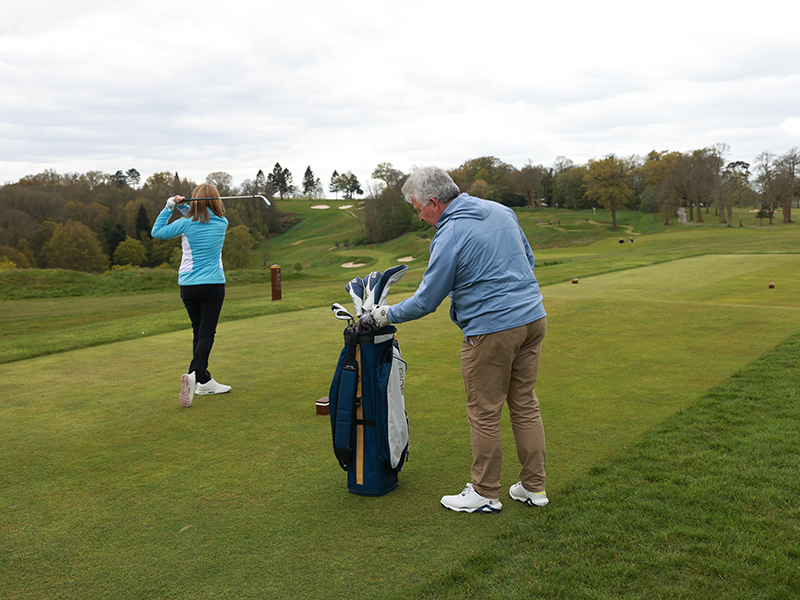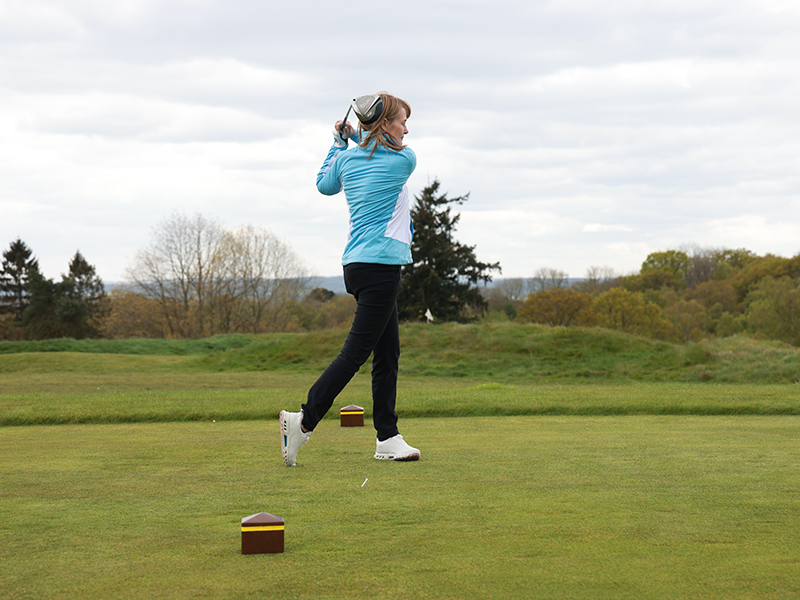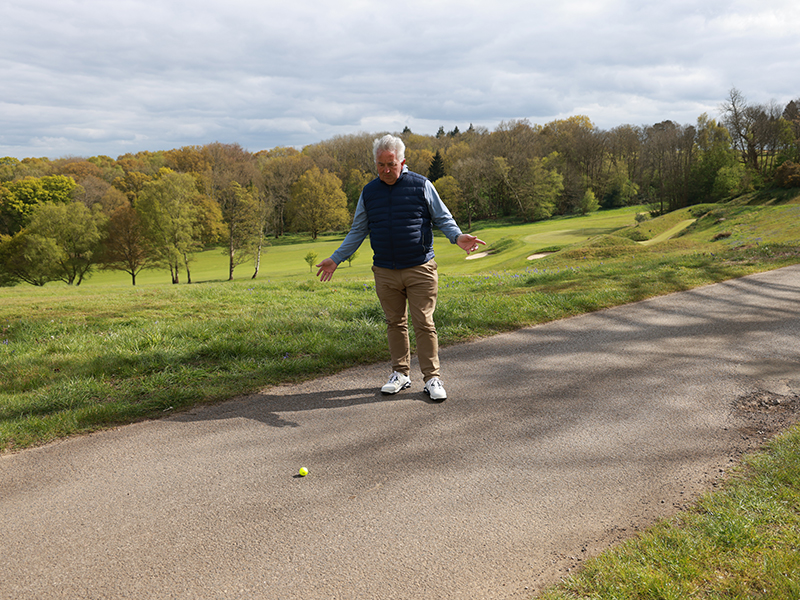I Narrowly Avoided A Bizarre Penalty On The Golf Course... Why All Golfers Need To Check These Perplexing Rules!
The rules of golf can be confusing, no matter how experienced you are in the game. In this video and article, we clear up five of the most perplexing examples

Whether you are new to the game or an experienced player, the rules of golf can be particularly confusing at times. Sometimes, without intending to be rebellious, players can inadvertently stumble into a rules faux pas and be left red-faced by common occurrences in the game – like what to do after playing into a red penalty area or declaring a provisional ball.
The best way to arm yourself against costly penalties on the golf course is to deepen your understanding of the rule book, and luckily for you we have just the man to help.
In this video and article, Golf Monthly editor Neil Tappin is joined by rules aficionado Fergus Bisset as they explore and clear up five of the most perplexing rules in golf...
1. Advice
Plenty of golfers will have experienced a time on the course where they have either given or received some advice from a playing partner, but did you know that you may have been breaking the rules?
You might think you were just being friendly and helpful, but rule 10.2a will make you think twice before being so charitable in the future.
According to the rule, a player is not allowed to give advice to other players in the competition, nor are they allowed to ask advice from anybody other than their caddie. Advice is determined to be a comment or an action that would influence a player in the way that they either select a club or play a shot.
For example, if you had a 150-yard shot into the green on a par-3, you couldn't ask which club your playing partner might be hitting, nor should they tell you this information. This would result in a general penalty, and likely a rather unhappy group for the rest of the round.
Subscribe to the Golf Monthly newsletter to stay up to date with all the latest tour news, equipment news, reviews, head-to-heads and buyer’s guides from our team of experienced experts.

It's not just verbal communication that can be scrutinised, as purposefully showing your club to a playing partner can also land you in hot water (general penalty).
There are some caveats to this, as your playing partner could say "The distance on this shot is around the same as your shot on the fourth hole, what did you hit?", which interestingly would be perfectly fine by the letter of the law.
You could also take a sneaky look in your playing partner's bag to see which club is missing as they take their shot, but be careful with this, as if you touch their equipment to do so, it will result in a general penalty.
This is a rule that can easily trip golfers up, so steer clear of giving or asking for advice in competitions.
2. Wind Direction
A familiar golfing custom that is probably seen on every course around the world is throwing blades of grass up in the air to determine wind direction. According to the rules, this is perfectly fine, but can we use anything else to help us acquire this crucial information?
According to rule 4.3a, relating to allowed and prohibited use of equipment, you are not allowed to use a piece of equipment that artificially eliminates the requirement for essential skill or judgement.
Part two of rule 4.3a deals with wind direction specifically, and states some clear examples of what you cannot do. If, for whatever reason, you had some powder, a ribbon or a hanky in your bag (stick with me on this), you are not allowed to use that to determine wind direction as it's classed as your equipment.
If you tested the wind in one of those ways you would receive a general penalty, and if you then did it a second time you would be disqualified from the competition.

So, what about using slope on your rangefinder? Well, as handy as that feature is, you can't use it in competitions. You can read the yardages on the device, because those are publicly available information, but you have to use your judgement to determine how much the slope will impact that yardage.
3. Provisional Ball
Imagine the scene... You've just sliced an awful shot into the cabbage and after the rage has subsided you've convinced yourself the safest option is to hit a provisional ball. Well, did you know that the rules are very prescriptive about how to declare your intentions?
Rule 18.3b states that you need to make it clear to your playing partners that you are playing a provisional ball, as if you don't do so your next shot will automatically be the ball that is then in-play – even if by some miracle, you find your first one.

So, what do you have to say specifically? Simply stating that you are going to hit another one won't cut it, as in most cases you need to directly state the words 'provisional ball' before playing the shot.
There is a little wiggle room in this, as if you extended your first statement to "I'm going to hit another one... just in case", you would likely get away with it due to the implied doubt.
There are other scenarios where it isn't practical to share this information with your playing partners, like if you are hitting from the fairway and need to play a provisional ball but the other players are way across the other side of the hole. In this case, simply hitting a provisional ball and declaring this at the next possible opportunity will suffice.
4. Immovable Obstructions
If you hit a wayward shot on the golf course, the walk to find your ball can be a rollercoaster of emotions – especially if you arrive and believe you have a chance of a reprieve thanks to proper application of the rules.
The rules around immovable obstructions, like a path for example, are slightly vague and it's important to know where you stand in order to avoid costly penalties.
In the scenario played out on the video, Neil has hit his shot into pretty treacherous rough down the right side of a path. The green is to his left (over the path) and the fairway is behind him, so can he avoid the torturous chop out of the weeds with a welcome free drop?
One ambitious suggestion that Neil made is that if he elected to hit a four-iron to the green, this would place his stance on the path, leading to a free drop at the nearest point of relief. Fergus was quick to quash that sentiment, however.

Rule 16.1a (part 3) states that you would not be entitled to free relief if the request is 'unreasonable'. If Neil was going to be taking a shot that he would have played anyway, he would be entitled to the free drop due to his stance being impeded by the immovable object (the path).
However, as Fergus ably points out, in order for Neil to play his four-iron shot he would need to hit a buried ball over 100 yards of trees and rough - making the request unreasonable.
More realistically, he would be chopping out sideways onto the fairway, resulting in a stance that, unfortunately for Neil, is not impeded by the immovable object. Therefore, no relief is given.
5. Known or Virtually Certain
Your golf ball has travelled like a rocket through the air and defied your passionate verbal instruction to get left or get down before it bounces into the penalty area near the green... or at least you think it has.
On many great golf holes and courses around the world, blind shots means that sometimes you don't actually see the ball enter the penalty area, even if you know that it has.
That's where the phrase 'known or virtually certain' comes into play, which is the standard in the modern rules to determine what has happened to a player's ball. In the specific situation on the video, Neil and Fergus are 'virtually certain' that the ball has ended up in the water hazard.
The rules describe 'virtually certain' to mean at least 95 percent sure, so 19 times out of 20 the ball will have travelled over the crest and made its way into the penalty area.
So, ruling out the astronomically rare eventuality that a seagull has pinched Neil's ball, we can safely assume its destination and he will need to take relief from the red penalty area.

But, what if the area leading towards the hazard is thick, heavy fescue rough? This is the sort of terrain that swallows golf balls, so in that scenario it's much harder to say you are 'virtually certain' that the ball will have reached the penalty area.
Instead, you would need to complete you search for the golf ball, taking no more than the permitted three minutes. If you fail to locate it, you will be making the lonely walk back to play again, probably feeling a little hard done by.

In July 2023, Neil became just the 9th editor in Golf Monthly's 112-year history. Originally working with the best coaches in the UK to produce instruction content, he has also presented many Golf Monthly videos looking at all areas of the game from Tour player interviews to the rules of golf.
Throughout his time with the brand he has also covered equipment launches that date back well over a decade. He clearly remembers the launch of the Callaway and Nike square drivers as well as the white TaylorMade driver families, such as the RocketBallz! If you take a look at the Golf Monthly YouTube channel, you'll see his equipment videos dating back over a decade! He has also conducted 'What's In The Bag' interviews with many of the game's best players like Rory McIlroy, Dustin Johnson and Jon Rahm. Over the years, Neil has tested a vast array of products in each category and at drastically different price-points.
Neil is currently playing: Driver: TaylorMade Stealth Plus Fairway Wood: Titleist TSR2 Hybrid: Titleist TS3 Irons: PING Blueprint S (4&5), PING Blueprint T (6-PW) Wedges: Titleist Vokey SM7 50˚, 54˚, 60˚ Putter: Odyssey Triple Track Ten Ball: Titleist Pro V1X

